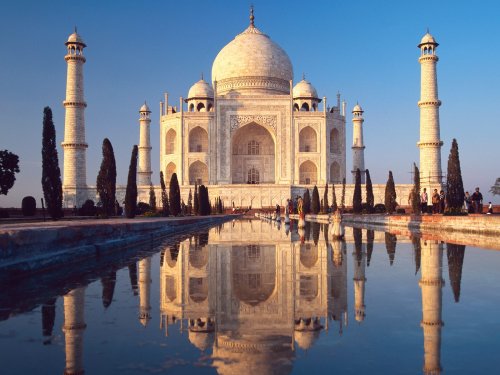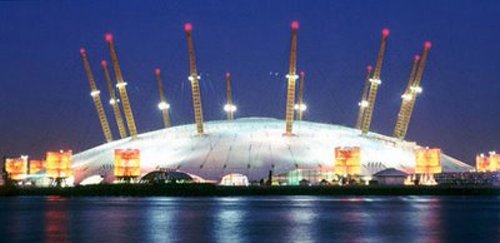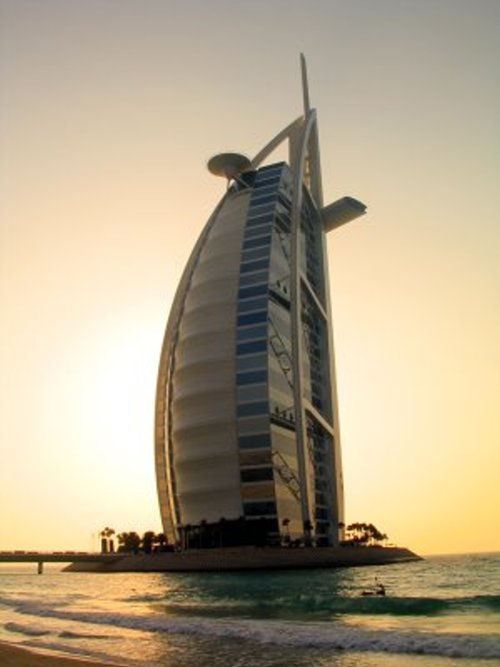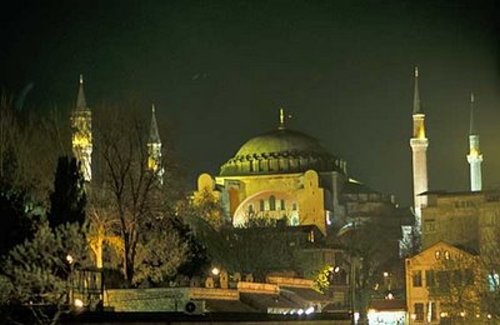
CRYSTAL FOLLIES
In his book Kaleidoscope Sky, naturalist Tim Herd explains the gamut of wonders that one can see in our atmosphere, some of which are shown in this gallery.
An Austrian ski resort provided this image of ice crystals. The crystals act like prisms, bending the sunlight at no less than 22 degrees. Thus, that ring you see is called a 22-degree halo, and its inside appears dark because light is bent away from it.










WHEN BOATS FLY
Don't believe the cartoons--mirages don't happen solely in the desert. Light bends anytime it passes through air, but when the air temperature varies dramatically over a short distance, causing it to have great fluctuations in density, it can bend light so much that a mirage occurs.
This image is called a superior mirage because it makes the boat look taller than it actually is. And superior mirages always include a portion of the picture that's inverted, as you can see here.

THE EYE OF SAURON?
With this chimney blocking the glare of the sun, we can see a faint 22-degree halo in the sky over Finland. This is called a circumscribed halo because we can see it go all the way around.
Halos happen all the time; they're more common than rainbows. But you have to block the sun's glare to see them.

TWO SUNSETS IN ONE DAY
The refraction of sunlight usually makes the sun appear flatter or more oval on the horizon during sunsets. This sunset over the Pacific Ocean, photographed by the European Southern Observatory in Chile, is a more pronounced version of that visual effect.
Refraction severely flattens the top of the sun, but its light is brighter because of a shorter trip through the atmosphere. The double sun seen below is called an inferior mirage. This is the most common type of mirage, the one we see all the time on highways on hot days.

AURORA IN RED
Subatomic particles fly out from the sun constantly, in what we call the solar wind. Luckily for living beings, the Earth's magnetosphere deflects most of these particles away from us.
But at the planet's far polar regions, some of these particles enter our atmosphere and provide the sweeping light shows we know as auroras.
Auroras emit light in colors across the visible spectrum, but just a few dominate, with green being the most common color. Ionizing oxygen high in the Alaska skies allowed for these rare red aurora rays.

DESERT STRIKE
You might remember this one from elementary school science class: Negative charges accumulate in the lower parts of clouds; positive charges accumulate in the ground.
When the voltage exceeds the air's capacity to insulate it--zap! This long, lone lightning bolt struck out across the Arizona sky near the Silverbell Mountains.

DANK RAINBOW
"Corona" usually refers to the outer layer of the sun, visible only during solar eclipses.
A corona here on Earth occurs when sunlight passes through tiny water droplets, separating into different bands, as you see here.

LOOK WHAT I CAUGHT IN MY WEB
Rainbows can form when light shines through water droplets in the air--the standard rainbow that we see not infrequently.
But if the sun shines in at a low angle, they can also appear when water droplets affix to certain surfaces, like the dew on this spiderweb. Grass, heather, and other small plants are also good surfaces for dewbows.

NOT READY FOR NIGHTFALL
Sometimes mountaintops shine in the pinkish light seen here, even when the sun has yet to come over the horizon or, more commonly, when it has already descended below the horizon at dusk.
This is called alpenglow, and it happens because the sunlight reflects downward off snow, water, or ice particles low in the atmosphere.

TAKING THE "BOW" OUT OF "RAINBOW"
This flat rainbow is called a circumhorizontal arc, a rare phenomenon that can form only when the sun is above 58 degrees in the sky and shines through plates of ice crystals. This one showed up in Spokane, Washington, in 2006.





